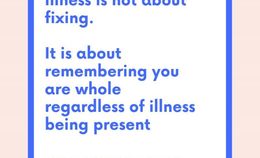Have you ever had acupuncture for PTSD and wondered if you could have the same benefits outside of an acupuncture session? EFT for PTSD can be a great treatment option that can be used just about anywhere.
In this article, we will be focusing on EFT for PTSD and how EFT can work for PTSD.
Emotional Freedom Techniques
The Emotional Freedom Techniques (EFT) utilizes the tapping of acupuncture points to stimulate acupuncture points for PTSD and has been shown to be effective in the treatment of PTSD, as well as pain, phobias, anxiety, and depression.
These points used for PTSD include the following EFT points:
-
The insides of both eyebrows
-
Beneath each eye
-
Beneath the nose on the midline
-
Directly beneath the chin on the midline
Beneath both collar bones just outside the midline of the body
If you want to know more about EFT, read: What is EFT (Emotional Freedom Techniques)?
EFT for PTSD
Wondering how EFT Works for PTSD? EFT has been proven to help those suffering from PTSD and it works for PTSD through a series of tapping and affirmations. It demonstrates the effectiveness of EFT with PTSD, we will be examining the findings of a study conducted by Lorna Minewiser, PhD. It is a study that looks at the effectiveness of EFT for PTSD. It is also a study that demonstrates EFT in action with a veteran who never worked through the feelings of loss or guilt over the death of a commander:
The veteran worked through three rounds of EFT the first round went like this:
Tapping on the outside fleshy part of his hand: "Even though I was supposed to go on the mission, and I didn't, I love and accept myself". He repeated this three times.
Tapping 6-7 times on each of the points below:
Eyebrow: "I was supposed to go on the mission."
Side of eye: "I was supposed to go (emphasis on 'supposed to go')."
Under eye: "But I didn't go on the mission."
Under nose: "I didn't go."
Chin: "I was supposed to go, but I didn't."
Collarbone: "I was supposed to go, but I couldn't."
Underarm: "I was supposed to go on the mission, but I didn't go."
3 Feelings that Can Arise from EFT: A Veteran's Experience
After the first round, he reported feeling three emotions:
-
Shame
-
Guilt
-
Grief
His second and following rounds of EFT in the same session worked him through those three feelings.
Interestingly, what he then felt went from emotional sensations to physical sensations of pain in two parts of his body:
-
Heart
-
Chest
To aid and work through these two physical sensations, he tapped and stated:
"I was supposed to go, and I didn't, and I was relieved I didn't go, but I felt so guilty for feeling relieved." for several rounds.
The final step of the process and tapping rounds had him granting himself forgiveness.
3 ways EFT Helped a Veteran
Three years after the conclusion of the research the veteran reported the following:
Level of happiness: Happier than he has ever been in his life
Level of anxiety: Rarely has anxiety
Usage of EFT tapping: Taps when he does feel anxious
How Many EFT Sessions are Required for PTSD?
Through a study published in the Permanente Journal , the number of sessions needed to see healing and improvement in people living with PTSD is ten.
Through ten sessions, the following percentages of quality of life and reduction of PTSD symptoms were reported:
Fully rehabilitated: 60%
Little or no progress: 10%
Moderate progress: 30%
Books on EFT for PTSD
Here are a few books on EFT for PTSD:
EFT for PTSD by Dawson Church
-
200 EFT Tapping Statements for PTSD by Tessa Cason
-
EFT Tapping Statements for PTSD, Survival, Disempowered, Anger, Fear by Tessa Cason
References:
Church, D., Stern, S., Boath, E., Stewart, A., Feinstein, D., & Clond, M. (2017). Emotional Freedom Techniques to Treat Posttraumatic Stress Disorder in Veterans: Review of the Evidence, Survey of Practitioners, and Proposed Clinical Guidelines. The Permanente Journal, 21, 16-100. Retrieved February 5, 2019, from https://www.ncbi.nlm.nih.gov/pmc/articles/PMC5499602/
Six Sessions of Emotional Freedom Techniques Remediate One Veteran's Combat-Related Post-Traumatic Stress Disorder. (n.d.). Retrieved February 5, 2019, from https://www.ncbi.nlm.nih.gov/pmc/articles/PMC5576207/





















